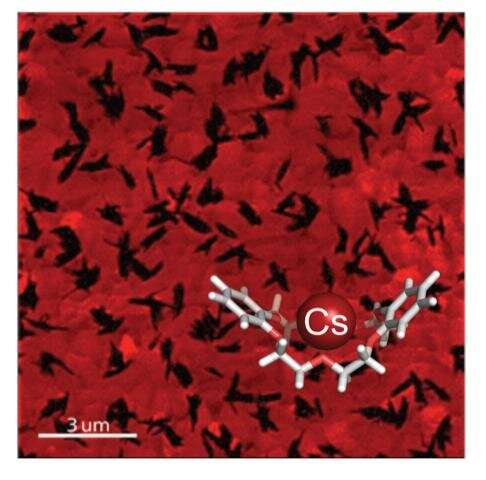
EPFL scientists have used an unprecedented method with multimodal host-guest complexation to greatly improve the stability of perovskite solar cells while also reducing the release of lead into the environment.
Perovskites are hybrid compounds made from metal halides and organic constituents, and show great potential in a range of applications, e.g. LED lights, lasers, and photodetectors. Their major contribution is in solar cells, where they are poised to overtake the market and replace their silicon counterparts.
Among the leading candidates for highly efficient and stable solar cells are formamidinium lead iodide perovskites, which show great light-harvesting capabilities. However, their stability is still an issue, especially under environmental and operating conditions, which limit their optoelectronic application.
Now, a collaborative team of scientists led by Professor Michael Grätzel at EPFL’s School of Basic Sciences have addressed the challenge by developing a “a multimodal host–guest complexation strategy.” Published in Nature Communications, the strategy involves using a member of the crown ethers, a family of cyclic compounds whose ring-like atomic structure resembles a crown.
The researchers used the dibenzo-21-crown-7 in the fabrication of formamidinium lead iodide perovskite solar cells. They demonstrated the efficiency of this synergistic approach with cesium metal ions, for which the crown ether shows a strong affinity. Acting as a vehicle, the crown ether assembles at the perovskite film’s interface and delivers the cesium ions into its interior.
“We use this multimodal host–guest-complexation to modulate the surface of the perovskite films as well as their bulk composition at the same time,” explains Dr. Jovana V. Milić, who was involved in the study.
“It is also very exciting to see that photoactive formamidinium lead iodide perovskite can be stabilized in humid environmental conditions for more than one year,” says EPFL scientist Dr. Hong Zhang, the first author of the study.
The overall effect is a greatly improved stability of the perovskite solar cells, showing power-conversion efficiency above 24% and an enhanced operational stability, maintaining more than 95% of their performance for 500 h under continuous operation. As an added bonus, the crown ether also helps bind lead ions, reducing their release into the environment.
Perovskite solar cells exceed 25% power-conversion efficiency
Hong Zhang et al, Multimodal host–guest complexation for efficient and stable perovskite photovoltaics, Nature Communications (2021). DOI: 10.1038/s41467-021-23566-2
Citation:
Crown ethers improve perovskite solar cell stability (2021, June 25)
retrieved 26 June 2021
from https://techxplore.com/news/2021-06-crown-ethers-perovskite-solar-cell.html
This document is subject to copyright. Apart from any fair dealing for the purpose of private study or research, no
part may be reproduced without the written permission. The content is provided for information purposes only.
Stay connected with us on social media platform for instant update click here to join our Twitter, & Facebook
We are now on Telegram. Click here to join our channel (@TechiUpdate) and stay updated with the latest Technology headlines.
For all the latest Technology News Click Here
For the latest news and updates, follow us on Google News.
